#collaborative storytelling
Text

Peaking behind the curtain of this piece, I made a point to draw Bode and Tayala in fully color before committing them to echo. @etoiline gave me some great direction and trusted me with much of the final details and I love how it all turned out. These two deserve a beautiful wedding.
#tayala akuna#bode akuna#taybode#my art#star wars#star wars fan art#jedi survivor#Jedi survivor anniversary event 2024#collaborative storytelling
23 notes
·
View notes
Text

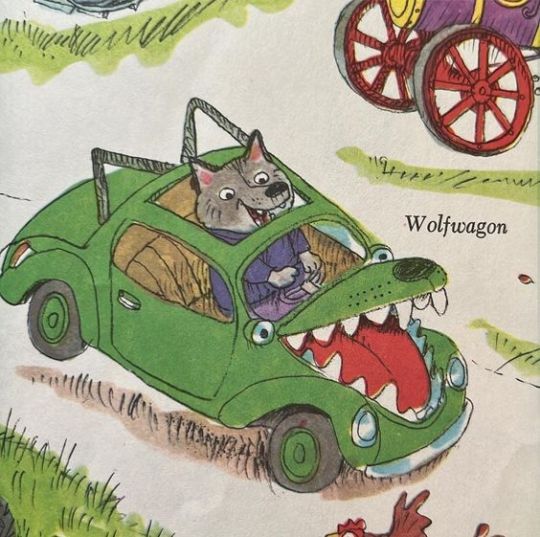
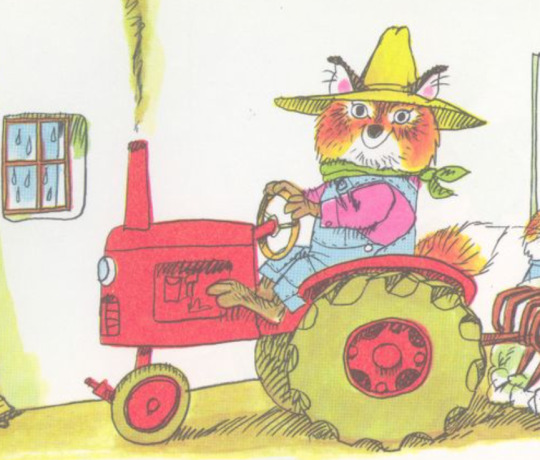
m/f/k?
150 notes
·
View notes
Text
re: Dracula (Daily)
It has been over 30(!) years since I read the book- but I thought I knew the story. I didn't follow along last year.. and wanted to try it.
THIS retelling, has completely turned my understanding of the story inside-out.
I open my email, and open my podcaster and Read-Along.
I am enraptured! I am delighted. I am so much clearer on what is happening!
234 notes
·
View notes
Text
Run V
You decide to enter the room you have yet to ever enter before. The walls have nothing notable to them save for a couple of paintings. One is a not too stylized painting of what looks like a nice garden next to a pool, bright and cheery. The other is an impressionist painting of some dirt path on an autumn evening-- exciting colours radiating out from the streetlamp and leaves. There are two windows surrounded by thick beige curtains. With dwindling strength and consciousness, you try to open both of them. Neither budge, however. Your line of vision turns smaller with each second, a growing dark vignette overtaking your periphery. Below your feet is a carpet; somehow you can feel its rough fibers despite having shoes on. You look down at the confusing and abstract pattern of warm-hot tones of red-green-beige-brown and feel some heavy vertigo.
Glancing around quickly before you faceplant directly onto the carpet, you take in some more details. You have enough time only to do one thing before you take your involuntary nap. You could swear you feel something tickling you under your chin. Too tired and knowing you'll slap yourself in the face if you try to hit it, you just tuck your chin in before turning in a slow circle to observe more of your surroundings.
To the right is a couch with a light beige and white fluffy blanket on it. It looks so cozy. A little closer to the door and still on your right is a large dark red blanket with a tiger on it, laying in a heap on the floor. You shudder, wondering if your insides would look like that if taken out. By whatever that thing is. The 'soulless sibling' and begrudging 'friend of the smoke.' To the left, on the sill of the furthest window, is a small metal beam. Like a piece from an unfinished furniture project. It's time to decide what to do.
#run poll game#my polls#tumblr polls#poll game#choose your own adventure#choose your own story#text based game#text based adventure#ask to tag#oh btw guys the next part of the game will be a lot of fun for me#why? take a guess what's happening next ;)#please reblog#please boost#collaborative storytelling
36 notes
·
View notes
Text

Hello community!
It's @theaphol here and we are proposing a new collab, all made in Spain.
We were looking for LEGO photographers whom we knew could deliver compelling visuals, but also, might be able to work together over a common language or geography.
For this project we invited @lady-brick, @jcmimoso and @sergi_h2opolo7 to be part of it.
They created their story around the 3-in-1 set 31120: Medieval Castle with the constraint of using mainly the second build, the tower.
Here's an excerpt from the story
"Once upon a time there was a kingdom ruled by the good king Aomir. His most precious treasure was his son Alfred, who lived at the top of the tower.
Like every Sunday, the lively weekly market was held at the foot of the tower.
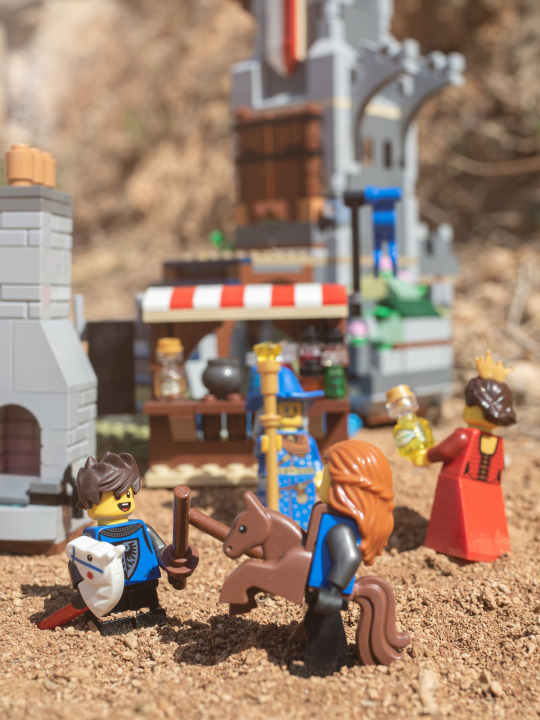

Suddenly, attracted by the music and the crowd, a huge dragon appeared in the sky, terrifying everyone present as it perched menacingly on the tower.
Prince Alfred, watching from the window, realized the danger, calling for help.


The soldiers run towards the catapult, but upon reaching it they see horrified how the winged beast has captured their beloved prince.

Oblivious to the tragedy, Sabina, a young falconer returns from a hunting party, when she sees a grieving soldier who asks for her help.
After an epic fight, Sabina manages to defeat the beast, which lies dying at her feet.
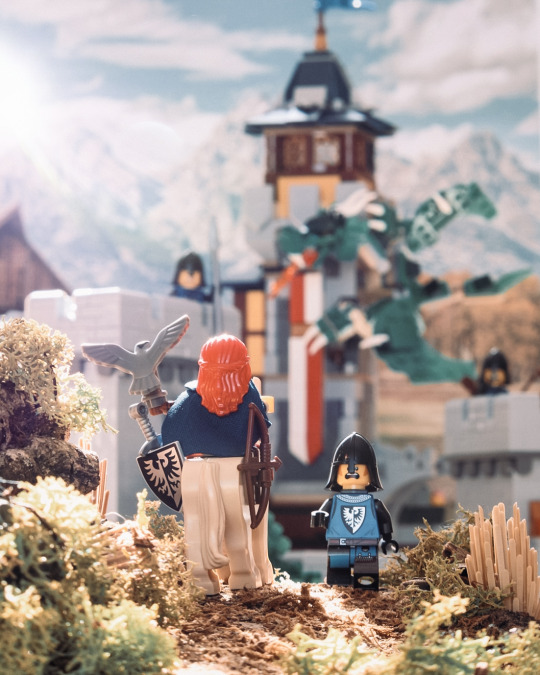
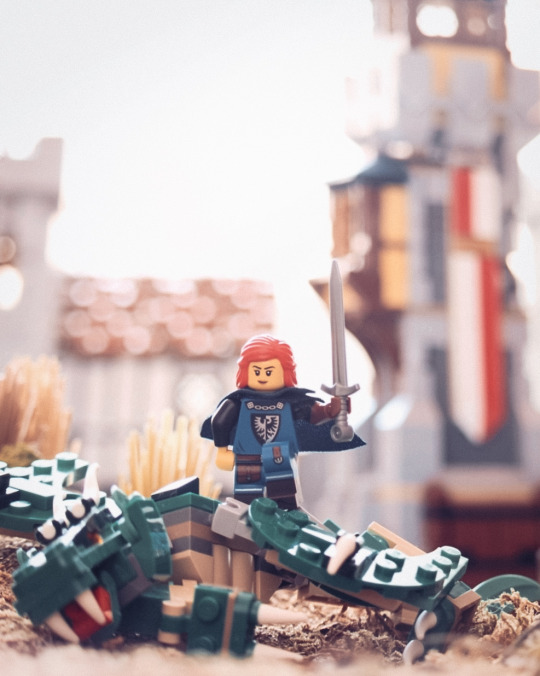
King Aomir assembles his warriors in the throne room knighting the young girl. The young prince asks for her hand to be the future queen.
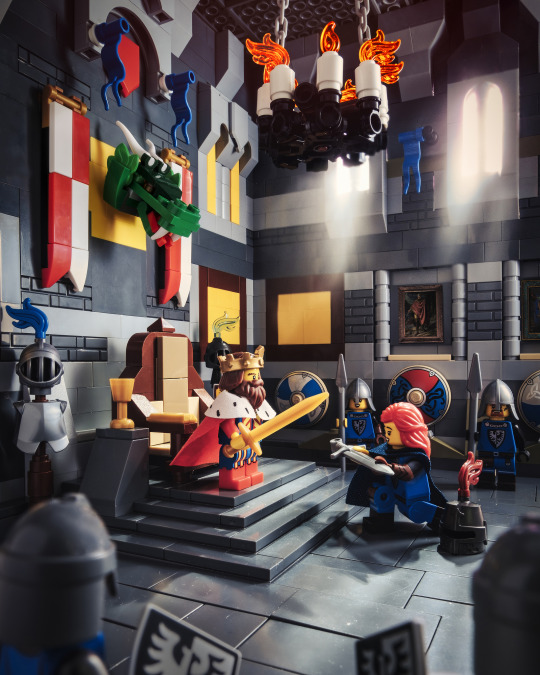
Since then, the story of the falconer who with her strength and courage became knight and queen on the same day is told in all the songs of the bards"
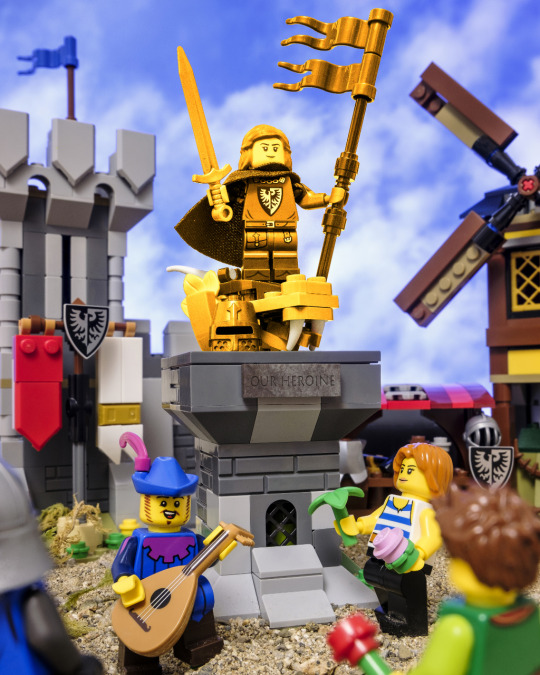
If you want to read the complete story visit the blog, also to have a look at extra shot and go behind the scenes with all of them to see the magic revealed.
And also please do check out their profiles where you'll find more excellent photography by each of them!
#afol#lego#legophotography#toy photography#brickcentral#lego photography#brickcentral member#minifigures#castle#lego castle#dragon#story#storytelling#collaboration#collaborative storytelling#bard#epic#knight#tower#moc
70 notes
·
View notes
Text
The thing I love about fannish creativity is how all of the stories kind of curl up next to the original version and pad it out, but in this variegated way where the padding around the original* story can create so many different answers to things like: what happened next? — what happened in the other character’s point of view? — why are there bees in the trees in the autumn? — what if the bees were surveillance cameras?
(This is, by the way, the collaborative storytelling we have been designed to do for, like, a couple-few hundred thousand years? * Yeah.)
Anyway. The example I have today (though I have others!) is from Victoria Goddard’s Greenwing and Dart series, which focuses on two young men named, as might imagine, Mr. Greenwing and Mr. Dart.
There were so many many stories where the buddy-sleuth (they’re not cops, Jemis Greenwing says ACAB) vibe they have going, their emotional intensity, their various in-jokes… I would have read as homoerotic subtext, like we’ve all been doing since Holmes and Watson.
And fanfic has always been such a reliable place for this. Like. Please and thank God for that. I keep talking about the Good Boys because I want them to experience every possibility of love and support and sarcasm they can possibly attain. And bring their friends. In wild permutation.
But for various reasons, halfway through its run I don’t think the text is “going there” (in terms of a G+D sexual relationship) — there’s plenty of gayness within the text, so it’s not Goddard pretending to ignore something (as if she would).
But it’s also not a sexually charged relationship**, and I’ll be astounded if that is how it actually ends for them. G+D hits beat by beat of a traditional romance in so many ways, but instead of “falling short” of true love like a 70s buddy comedy, it falls otherwise. Mr. Greenwing and Mr. Dart are each the most important person in the others’ lives. That will not change. Their mutual loyalty is so precious to me that I fear to mention it lest I endanger it.
So — though I will read alllllllll of the Greenwing/Dart fanfic y’all want to write! — I would sort of be let down if they did get together sexually “for real” (i.e., in canon). The beauty and vulnerability of their friendship is gorgeous just as it is, and my demi/gray-ace heart finds that so fulfilling. I trust the storyteller here and have no doubt she can get me “there” if that’s where she’s going, but I love their dynamic and the way it shows another model of love. And since that’s often a theme in Goddard’s writing, I think she’s doing it on purpose.
So if she did “go there”, great, nothing I like better of an evening than reading a satisfying romance about two people (who are fictional and nothing at all like me) finding true love and also orgasms. But if she sticks the queerplatonic landing as I am currently expecting, I will be deeply satisfied.
Either way, fanfic will fill in and give us the story that’s not there. And that’s what I love about stories that accumulate other storytellers.*
Anyway, to my POINT, which is that I love fanfic for its profusion of color, AND I also love the original* canon everyone more or less agrees on and either (1) elaborates within that framework or (2) turns it on its head.
And please go read these books. The love, the loyalty, the yearning… the FANFIC just trust me. I want 500K of G+D fic on my desk next Monday and I’m hardly going to do it all myself 😂
- notes -
* I think in the end every story is one story, but also that that’s why every retelling of that story is singular and cannot be duplicated. Along with also having a theory about social storytelling and music being the ways we managed our mental health long enough to develop agriculture (and then fuck that cultural system up.)
But anyway. I’m also a tiny bit high right now, so this may not be as deep as I think it is. :)
** Look, in canon, which is from Jemis’s perspective, you know I’m right. And yes, it’s equally well established that Jemis is an otherwise very smart young man who is utterly oblivious about his own sex appeal. So it’s like a Schrödinger’s cat of they will kiss/they will not kiss, and I eat that up with a spoon.
#greenwing and dart#nine worlds#victoria goddard#queerplatonic#mental health#Aunt Sanj: gummy auntie?#maybe a little on alternate Sundays#storytelling and human behavior#this is what we get when Sanj doesn’t edit their sentence structure#gray ace#collaborative storytelling
11 notes
·
View notes
Text

By the Book's redesign is well underway!
Check out this new cover, and get ready for the full update coming in just a couple weeks.
And while you're waiting, pick up the current version of this FREE introductory TTRPG here and start telling stories together!
#ttrpg community#ttrpgkids#introductory ttrpg#collaborative storytelling#indie ttrpg#ttrpg design#indie game design#ttrpgs
14 notes
·
View notes
Text


The collaborative map my new Pathfinder group made using The Quiet Year, vs. the redone version I made in Inkarnate!
I'm going to keep adjusting it and adding to it as we get into the game, but this was a lot of fun to do and create with my players!
#The quiet year#pathfinder#map#ttrpg#world maps#island#fantasy world#pathfinder 2e#inkarnate#cartography#desert#level 0#session 0#collaborative#second edition#pf2#collaborative storytelling#maps
10 notes
·
View notes
Text
After 8 and a half months, I've decided to take You Are In A Room up again.
I've copied all previous parts of the story to AO3, so I don't have to work around the many issues with Tumblr poll posts in order to provide continuity. You can read the whole story, starting here.
And now, the story continues...
You were in a room. It was dark in there.
You left the room and the House it was in, crossed a road and entered a Wood, crossed a stream and climbed a hill, then took a Staff from a Ramshackle Hutt.
You swung the Staff around like some kind of warrior and accidentally triggered some sort of magic reaction from the fire pit in front of the Hut.
The pit lit up with strange symbols that resolved themselves into the words:
WELCOME UNIT TWO. PLEASE COME TO THE OBSERVATORY.
A glowing pool now sits where once there was a fire pit.
Cautiously, you extend you hand into the pool. Your skin tingles when it touches the water-like surface, but it doesn't feel wet.
On the other side, of the glowing membrane through which you reach, you feel only air. It's maybe a little warmer than the cool spring sunshine in which you stand, but not uncomfortably so.
REBLOG TO MAXIMISE CHAOS!
I'll add this as a new chapter on AO3 after it posts and link back in a reblog. This means you'll now be able to comment 😯 Comments will not effect the poll, but could be fun!
#You are in a room#poll your own adventure#choose your own adventure#text-based adventure#collaborative storytelling#polls#poll story
11 notes
·
View notes
Text
Into the Perilous Wilds
I can clearly remember when I took my first, tentative steps into the hobby that would ultimately become my lifelong obsession. Sitting in a Walden Books on the floor, flipping through one of the Monster Manuals for Advanced Dungeons and Dragons and marveling at the artwork while I read the bits of lore written on the page to accompany it. After that, the first Table Top RPGs I ever played were, first, Shadowrun and that black book AD&D with the Barbarian on the cover.
This was an era where the Gamemaster was considered like unto a god. Prevailing Gygaxian advice was that players should defer to the GM's judgement and that the GM themselves should deeply understand the lore of their world, have answers for everything, be able to make harsh but impartial decisions on the spot. It was a point of view that had a huge impact on what I thought it meant to play TTRPGs and especially what it meant to be a GM for a very long time and would not change until much later in life when I encountered the indie revolution that swept through the space around the end of 3.5e/beginning of 4e when Powered by the Apocalypse games had their day in the sun.
PBtA games were the first games I really encountered that called out the idea of collaborative storytelling to an extent that caught my attention. They told you to ask your players their opinion, and featured moves with advice to ask the player themselves where they might have learned the information they new in character. These were questions that had implications on the lore of the world. In a heartbeat your players, rather than you as the godhead of the game, could shift the entire world in tone, or even turn the whole thing on its head. You might still control the Fronts, and the world itself might still be your character to play, but suddenly everyone had the creative freedom to change things in new and interesting ways baked into the mechanics of the very game.
I loved it.
Fast forward a few years and I would encounter a funny little book called The Perilous Wilds, a supplement for the PBtA game Dungeon World.
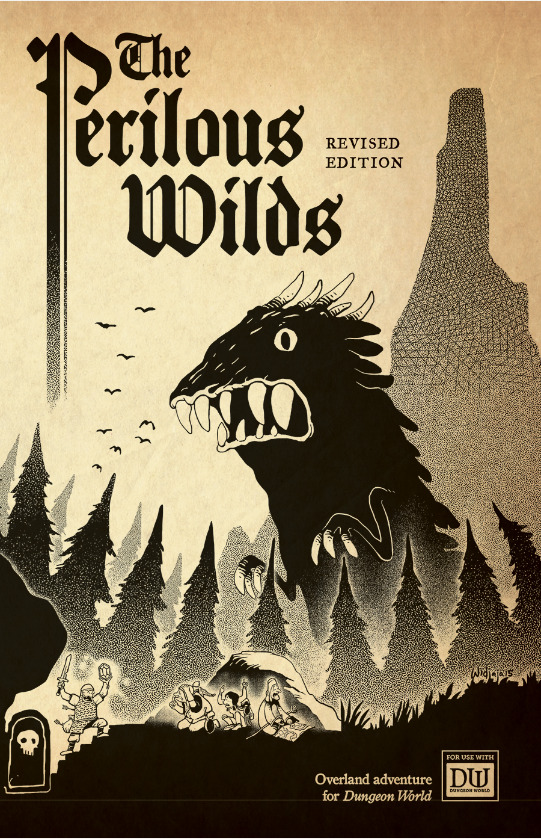
This little book is 76, digest-size pages, and had such a simple pitch:
The Perilous Wilds combines Dungeon World's approach to collaborative world-building with the old-school RPG reliance on random tables to generate content on the fly, woven together by modifications to the original Dungeon World travel moves. The main differences between the use of tables in The Perilous Wilds and their use in older RPGs is an emphasis on exploration and discovery over combat encounters, and the baked-in methodology of using randomized results as prompts rather than facts, to be interpreted during play.
The collaborative map-making guidelines and all of the tables are system-neutral (usable with any RPG rules). Although the tables are structured to tie directly into the rewritten travel moves, they can be used in any game in which a fantastical landscape is explored.
It was in this little book where I found a concept that was, perhaps not new, but one that I was incredibly taken with. Letting the players draw the map, and by extension, the world.
Starting from a discussion of the fiction of your world, be it a village on the frontier or even en media res as you emerge from a ruin temple into the wilds, you had your players a blank sheet of paper with a simple X on the map that says you are here. From there, you start with the youngest character in the party and proceed clockwise around the table. Each player is given the opportunity to add a region to the map, be they a swath of land or a sea, defined by either their prevailing terrain type or political boundaries, and then give that region a name. This step can be repeated as many times around the table as you like, but eventually you have to move on.
From there, each player is asked to places to the map. Areas, Steadings, and Sites get injected into the map, starting from the Fiction of which character is the most well traveled. Areas are like sub-regions, calling out interesting exceptions to a Region's overall theme. Steadings label the settlements of the territory, its villages, towns, keeps, or cities. Sites meanwhile, create your points of interest and landmarks. Each of these is meant to be given a brief description and name, the process continuing until everyone is satisfied with the amount.
After this the Oldest Character steps up and begins adding personal places. The book asks them to name two things: The place the character calls home and a place the character finds significant to them. These can be places already on the map, or newly named and added details like in the previous step, but the question must be answered of each: why? Why does your character choose to dwell where they do? What important thing happened to you at the point you've marked on the map? It tells you to shape the fiction of both the world and the character by considering such a simple but necessary detail.
After that, each player gets the chance to add connectors to the map in the form of roads, rivers, paths, or leylines. Anything that can be reasonably considered to connect to places within the world. Name it now, or name it later, but they must be drawn on the map as you further define the territory.
Finally, the book asks the most knowledgeable character to begin the process of sharing rumors and legends. Something the character has heard about any place on the map, but something that no one in the party can be sure to be true or false. The rumors must be noteworthy and provocative, the book advises, but each player has the chance to add to the depth of the fiction. Cutely, the book even offers the following advice:
This conversation might happen in character, or not. Ask clarifying questions; chide the speaker for giving any credence whatever to such malarkey; whistle in awe at the very idea.
And meanwhile the book itself speaks directly to the Game Master and asks you consider which of these rumors is really true, and what does that mean for the world?
All of this is excellent advice, and the procedure itself has been fun and engaging to work with every time I have put it to use in one of my games. It's also one of the primary reasons that I took to Fabula Ultima with such gusto, after reading that game's own advice and procedure on how to build a world. The two products are aligned in their ideals of what it means to create a world for cooperative storytelling, and the similarities in their process was striking.
But it goes beyond merely that.
The book is filled to the brim with interesting mechanics for the game Dungeon World, including new rules for followers and overland travel, Moves for handling the weather and compendium classes for your players to level into, but even past the mechanics built specifically for one game in particular, there are so many tables and system agnostic little details.
There's a Monster maker, a Discovery generator, Steading creator, and so much more. There are tables for creating quirks and details for people, places, and things, and a section that provides a whole array of rules for generating dungeons on the fly who's details can be fleshed out as you go and it's layout can be easily represented by a flowchart rather than meticulous lines drawn on graph paper.
And most importantly, the book simply tells you to trust your gut.
Yes, it offers you advice on how to prep between sessions, but it advises that a little bit of prep can go a long way. You don't need to worry about having all of the answers. Your campaign bible need not be so thick that you could bludgeon someone to death with it. All you really need is a sense of what is happening in the world and your gut instinct as a storyteller. You really only have to take a step back think more deeply on the game, its Fronts and its people and places, if you begin to sense instability in the world's fabric that you or your players find intolerable. With practice, the book says, you shouldn't need more than an hour or so between sessions to make the minimal, necessary notes for what comes next.
It's an excellent little tome, and one which I still use to this day, even though we're not currently playing any Dungeon World games. The tables provide me with rich inspiration and quick in-game answers to the question of what comes up during exploration. Its dungeon generation system has taught me that in theater of the mind play, a node map can be just as useful as a real one.
And when I feel my dedication to the ideal of collaborative world building and storytelling slipping because I want more answers or more control, I flip through its pages and read its advice as a reminder that we don't have to live in the castles that Gygax built any longer.
#ttrpg#indie ttrpg#Perilous Wilds#Dungeon World#inspiration#random tables#collaborative storytelling#world building#fabula ultima#pbta
46 notes
·
View notes
Text

It has officially been 1 year since the release of Jedi: Survivor and this fandom continues to be a delight and inspiration.
This year, I’m celebrating in the Star Wars: Jedi Survivor Anniversary Event on AO3 with an illustration for “paper and stone”, written by the wonderful and talented @etoiline. I’ve also got some extra details over Here.
Here’s to another year of Star Wars Nonsense.
#spyscrapper#cal kestis#tayala akuna#bode akuna#taybode#Jedi Survivor Anniversary 2024#my art#star wars#star wars fan art#star wars fallen order#jedi survivor#collaborative storytelling
24 notes
·
View notes
Text
OK Dick Terrifying starts tomorrow! Boo! haha.
It'll be a storybook page with a poll of what happens next. Probably a new page every other day (I thought about one a week but like, 3 months is too long man)
🦝 🏁
44 notes
·
View notes
Text
300 Follower Special: Whump Collaborative Storytelling
NOTE: Make sure you read the RULES here before you participate if you haven't already! If you have any questions, DM me, send an ask, etc!
Without further ado... let's start!
TWS: slight cursing.
_____
Whumpee sighed as they walked down the street. They had no idea how long they were out here, since they had that fight with Caretaker. But they wanted to get away from that place to cool off. To stop thinking about it before they returned home.
They shook their head, trying to get rid of the burning words Caretaker had said to them.
"You're so ungrateful!"
"You're such an asshole!"
"You always take and no give!"
Shut up, shut up, shut up! They pounded their head gently to get rid of those words. Caretaker was wrong in this. They had no reason to yell at Whumpee. One minute, they were fine with them. The next, they were yelling at them. What in the world had happened?
No, that's enough.
Whumpee was so focused, they didn't hear something--or was it someone?--behind them...
#my whump stuff#whump#whumpee#caretaker#argument#fight#cursing#300 follower special#whump story#collab#collaborative storytelling#interactive story#writing collab
25 notes
·
View notes
Text
the d20 kind of sucks for TTRPGs
In a good number of systems, the 20-sided die is the primary die used for determining success or failure of any given action. On paper, this makes sense. 1-20 is a good number range, and the factors of 2 and 10 make a lot of sense when developing games, as it gives you a lot of freedom to make giant tables or the like without sacrificing consistency.
However, in my experience, the d20 is too random. When you break it down, you have pretty much exactly a 5% chance to roll any given number on the die. So if you need to roll a 15 to succeed on an action, you have about a 25% chance to succeed that action not including any modifiers. This works very well when you're handling "straight" rolls, or typically when doing something your character doesn't have any particular advantage or disadvantage with.
For example, when you have a character who has say, practiced sword combat their entire life with a deep variance of targets, and you have maybe a +5 to this roll to hit someone with a sword with a threshold of 15. This is a fairly typical setup, but this now only increases your chances of succeeding on this roll to 50%. Which... feels bad. The d20 makes this check with modifiers still basically a coin flip, which ideally should not be the case with a (functionally) percentile die. The larger margins of values should give more dynamics to rolling checks, not less.
In Pathfinder 2e for example, a system I quite like and enjoy, this problem gets especially bad when you consider how critical successes and failures work in that system. The way criticals function is that if you succeed or fail a given check by 10 (so with the 15 example, rolling a 5 is a critical fail and rolling a 25 is a critical success, including modifiers). Theoretically, this is sort of designed to solve the problem I proposed, in which that characters who are exceptionally skilled at something still often have a coin-flip level probability to do the thing they're good at.
However, in practice, instead of making characters who are skilled at their thing more likely to succeed and succeed well, it doesn't really change anything except the frequency in which critical successes or failures are rolled. At the end of the day, the threshold to succeed is the threshold to succeed, and rolling higher than that is more or less just a narrative tool (unless you're rolling a critical in combat), which you don't necessarily need codified gameplay mechanics for. You can kind of just do that when an exceedingly high roll calls for it.
Basically, I just don't think the randomness that the d20 introduces is useful, and essentially having a "fuck you" mechanic in which you can just get unlucky and be completely unable to function in gameplay sense just... is bad. I don't think the forces of RNG should be able to deprive players of their agency, and the inconsistency it introduces is a net negative to enjoyment of the game as a whole. I think in order to deprive players of their agency and have it remain fun, there needs to be structured, non-randomized systems that do this. You can get unlucky in real life, yes, and that can make you unable to function. But in a TTRPG, it just isn't that fun or interesting to me. Players should succeed well thought out maneuvers and fail poorly thought out maneuvers or those completely outside of your expertise. Randomization should be used for the things that fall in between those margins.
#ttrpg#table top rpg#ttrpg design#roleplaying games#rpg#tabletop#tabletop games#table top games#story games#collaborative storytelling#table top role playing game#lore#ttrpg lore#writing#creative writing
3 notes
·
View notes
Text

Hello community!
It's story time at Brickcentral and we are proposing a new collab, all made in Japan.
We were looking for LEGO photographers whom we knew could deliver compelling visuals, but also, might be able to work together over a common language or geography.
For this project we invited @legograph.ta163, @rennerbricks and @brickanywhere to be part of it.
They created their story around the 31139 Cozy House and here's an excerpt

"In a corner of a serene country, a little boy lived with his parents.
One day the boy saw a photograph of the sea, a sight foreign to him who had spent his early years in the mountains.

On their next vacation, the parents decided to take him to a seaside hotel. Once arrived he sprinted to see the ocean. Yet he longed for something that could float upon the water, like the picture in their home.

In the attic of the hotel, he discovered a weathered sailboat.
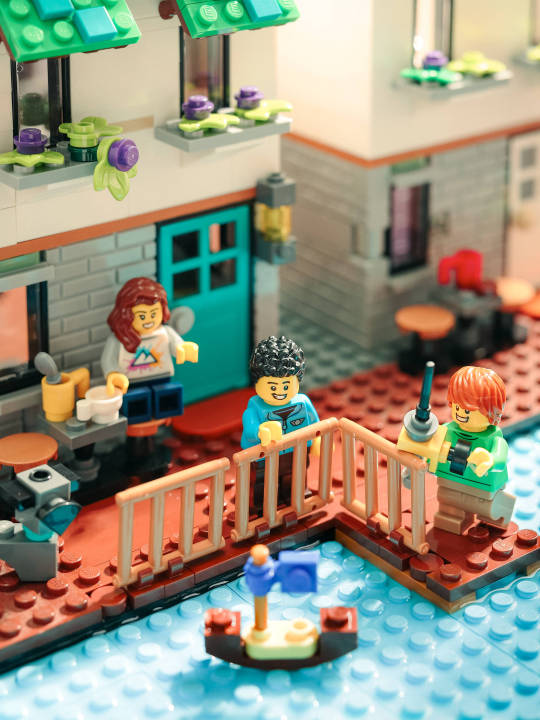

The boy embarked on the adventure of creating his very own boat. His parents were astonished but willingly became part of his boat-building team, helping him assemble an engine.

The boat they built together was relatively small, yet it was spacious enough for the family of three to embark on an oceanic journey. As they set sail, they were greeted by the breathtaking seascape and a warm welcome from playful dolphins.

As the sun began to dip below the horizon, the boy and his parents arrived at a remote seaside cottage.

He suddenly remembered something and hastily entered to this cottage then he handed his parents a letter.

What could it contain? The secret shared only among family members remains a mystery, but the expressions on the parents' faces suggest a gesture of love.
Several years have passed since those cherished memories by the sea. The boy has grown into a young man, found employment, and now possesses a room of his own adorned with a photograph, the remote-controlled sailboat, and various mementos and items related to the sea. What kind of life is the young man leading now? The answer lies in your imagination."

If you want to read the complete story and go behind the scenes visit the blog!
And also please do check out their profiles where you'll find more excellent photography by each of them|
But stay tuned because the story does not concludes here!
@theaphol, Community Outreach Manager
#lego#lego photography#brickcentral#toy photography#afol#legophotography#toyphotography#minifigures#brickcentral member#lego story#collaborative storytelling#storytelling
14 notes
·
View notes
Text
December Update!
Hello folks! Thank you so much for your interest in this little project!
Our initial goal was to have the first issue out this month, but due to starting new campaigns in two new systems and a lack of outside submissions, we just don't have enough finished for a full issue.
In the interest of not losing steam for this project, we're accepting all TTRPG-related submissions for the first issue! This includes homebrew items and creatures, character art, discussions of mechanics and alternate rules, and much more!
Check out our earlier post to learn more about how to submit and what that means for you!
Happy Holidays, and Merry Adventuring!
#Ttrpg#fantasy writers#homebrew#dungeons and dragons#pathfinder#blades in the dark#collaborative storytelling#digital illustration#zine#dnd#d&d#tabletop#art commissions
6 notes
·
View notes